The century-old National Shrine of St. Michael and the Archangels, also known as San Miguel Church or Malacañang Church (as it adjoins the Malacañang Palace complex, the official residence of the President of the Republic of the Philippines), is located on the former site of La Fábrica de Cerveza de San Miguel (now San Miguel Brewery).
This Catholic church of the Latin Rite is dedicated to the seven archangels who fought against the Lucifer, the fallen angel who rebelled against God – Saint Michael, Saint Gabriel, Saint Raphael, Saint Uriel, Saint Selatiel, Saint Jhudiel, and Saint Barachiel.
An archangel is supposedly assigned to a person depending on the day he is born – St. Gabriel for Monday, St. Raphael for Tuesday, St. Uriel for Wednesday, St. Sealtiel for Thursday, St. Jhudiel for Friday, St. Barachiel for Saturday and St. Michael for Sunday.
Here are some interesting trivia regarding this church:
- It is the only shrine in the whole world dedicated to the aforementioned seven archangels
- As it almost next door to the most important address in the country, a number of presidents have heard Mass at the shrine – Carlos P. García, Gloria Macapagal-Arroyo (usually accompanied by her husband Mike Arroyo) and Fidel V. Ramos (who is not even Catholic but Protestant). Then-Ilocos Norte Representative (and later President) Ferdinand E. Marcos also married then-beauty queen Imelda Romuáldez in the shrine (at that time a pro-cathedral) on May 1, 1954. Their wedding, tagged as the “Wedding of the Year,” followed almost two weeks of courtship. President Ramon Magsaysay stood as Principal Sponsor.
- Unlike most Catholic churches in the country that are usually overflowing with parishioners on Sundays, the prominent location of this church seems not to entice parishioners to hear Mass here. St. Michael only has about 1,500 parishioners, some of whom are descended from old-rich families (who were the benefactors of the church) in San Miguel District (most of these families, however, left this district during Marcos’ time). One reason churchgoers might be staying away is the abundance of checkpoints all over the Malacañang Complex.
- It only holds three Masses on Sundays – two in the morning and only one in the evening.
- The national shrine is also, notably, the only Catholic church in the country where priests (instead of bishops) are canonically permitted to administer the sacrament of Confirmation twice a week (on Thursdays and Sundays).
- A few blocks away is the National Shrine of St. Jude Thaddeus, the patron saint of desperate cases
- Among those buried in San Miguel are Don Enrique M. Barreto (founder of San Miguel Brewery) and Don Domingo Roxas (patriarch of the Zóbel-de Ayala-Roxas-Soriano clans). Archbishop Gabriel M. Reyes, the Archdiocese of Manila’s first Filipino ordinary (served from 1949 to 1952), was initially buried in the shrine before his remains were transferred to the crypt of Manila Cathedral.
The church has a Neo-Classical façade with a semicircular arched main entrance and windows, a rose window at the second level and flanking, symmetrical bell towers with melon-shaped domes topped by turrets.
Here is the historical timeline of the church:
- In 1637, San Miguel Church was first built in stone by the Jesuits, along the left bank of the Pasig river (where the Tabacalera, Mirador Hotel and the old PCSO office are now located) in Paco, Manila (formerly known as Dilao).
- During the 1645 Luzon earthquake, the church was damaged.
- In 1779, a provisional church, along the north bank of the Pasig River, was started by Fr. Malo de Molina.
- In 1783, it was transferred to its present site and placed under the jurisdiction of the Quiapo Parish.
- In 1835, the first church on this site was built by Franciscan Fr. Esteban Mena
- In 1852, after an earthquake, Fr. Francisco Febres repaired the church and rebuilt the destroyed bell tower.
- During the July 19, 1880 earthquake, the church was destroyed.
- In 1886, the church and its bell towers were repaired by Fr. Emilio Gago.
- In 1913, the church was rebuilt by Fr. Hipolito Arce (parish priest from 1900 – 1940), through the generous assistance of Doña Margarita Róxas de Ayala, on its present site and inaugurated on September 29, 1913.
- From 1946 till December 8, 1958, following the city’s destruction in World War II, the church was designated as the pro-cathedral of the Archdiocese of Manila by Monsigñor Michael O’Doherty while Manila Cathedral was being rebuilt.
- On February 22, 1986, the church was elevated to the rank of National Shrine by the Catholic Bishops’ Conference of the Philippines (CBCP), with Ricardo Cardinal Vidal of the Archdiocese of Cebu and Papal Nuncio Bruno Torgigliani in attendance. The CBCP made the decision via de jure, citing the church’s rich history.
Its main altar, built with fine wood and stately marble and designed by Fr. Ramon Dodero, an Opus Dei priest, in 1985, is a replica of the old altar built in 1800. It has a statue of St. Michael crushing the enemy, in the center, with the other six archangels flanking him.
In front of the church is the beautiful 12-ft. high bronze statue of St. Michael in his traditional pose, triumphantly looming over a dragon (Satan). Done by renowned Filipino sculptor Florante “Boy” Caedo, it was blessed in September 29, 1984 by Papal Nuncio Bruno Torpigliani with His Eminence Jaime Cardinal L. Sin, D.D. and Col. Antonio Cabangon Chuas as unveilers.
National Shrine of St. Michael and the Archangels: 1000 Jose Laurel St. cor. General Solano St., San Miguel district, Manila, Metro Manila. Tel: (632) 735-1611 and 734-1271. Fax: (632) 736-1105.

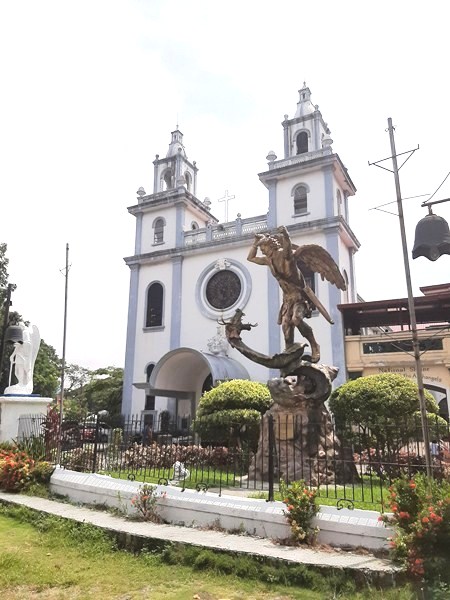
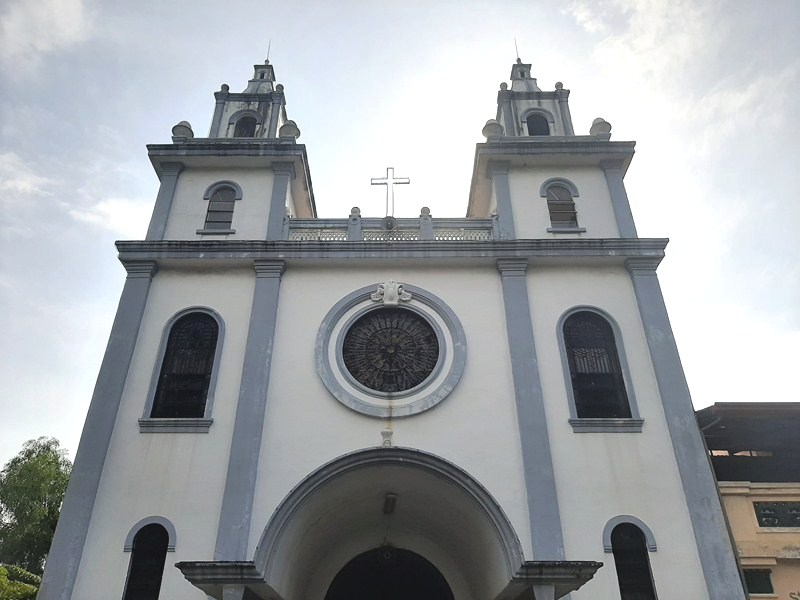
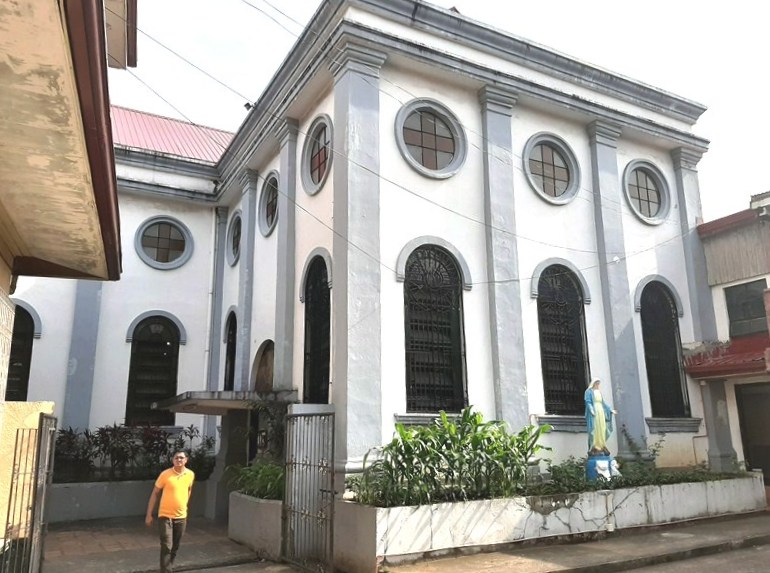
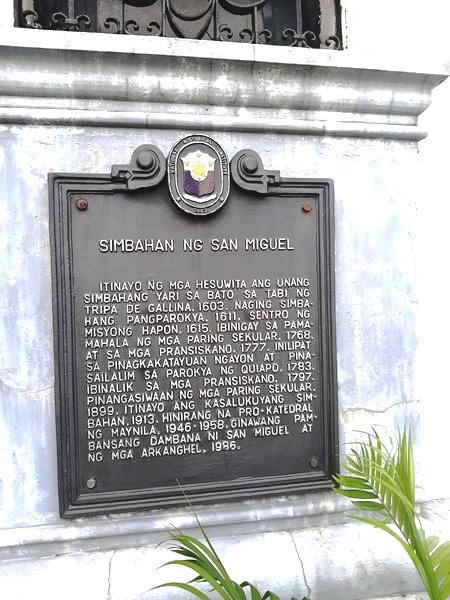
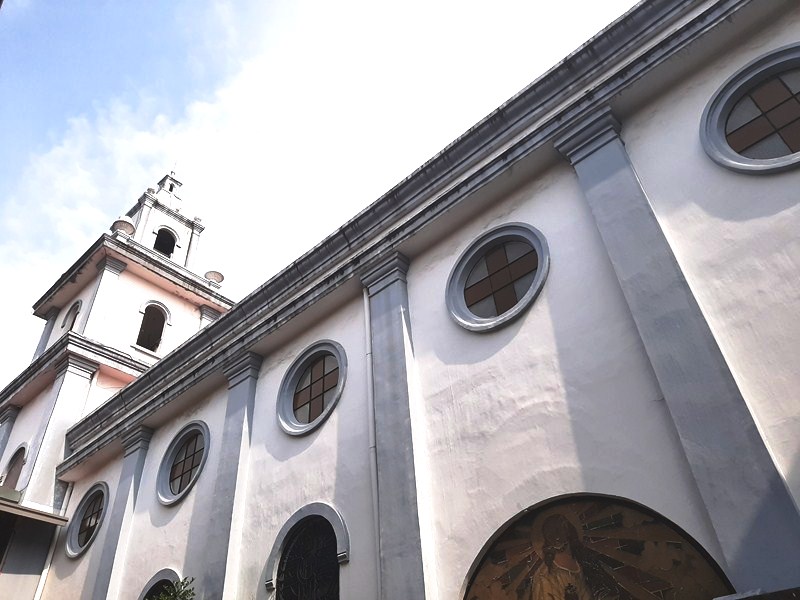
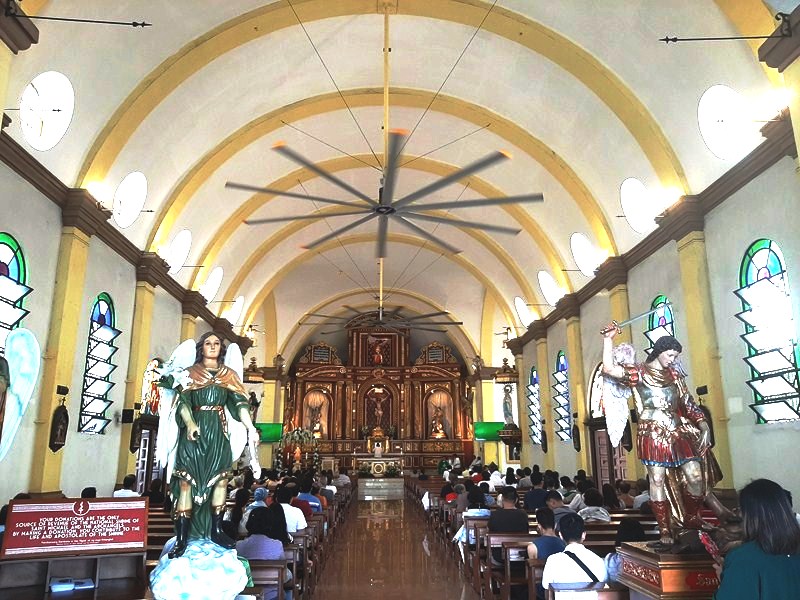
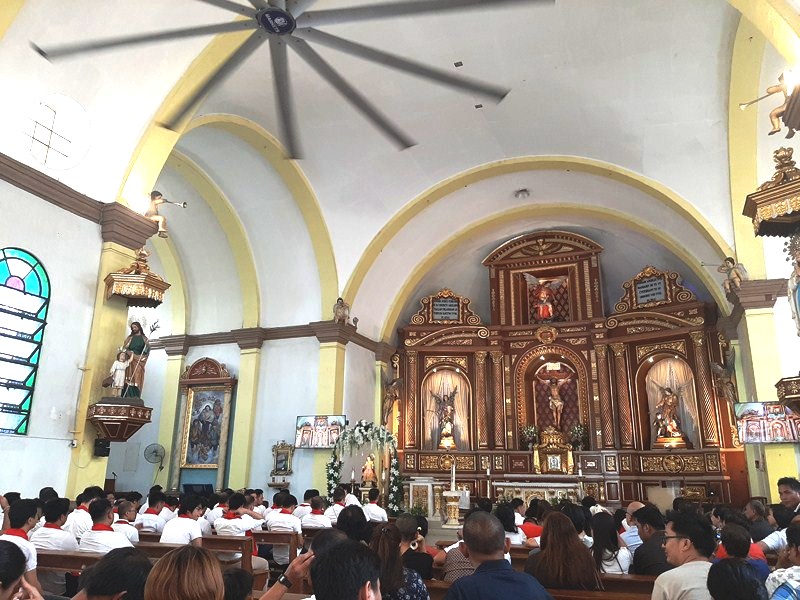
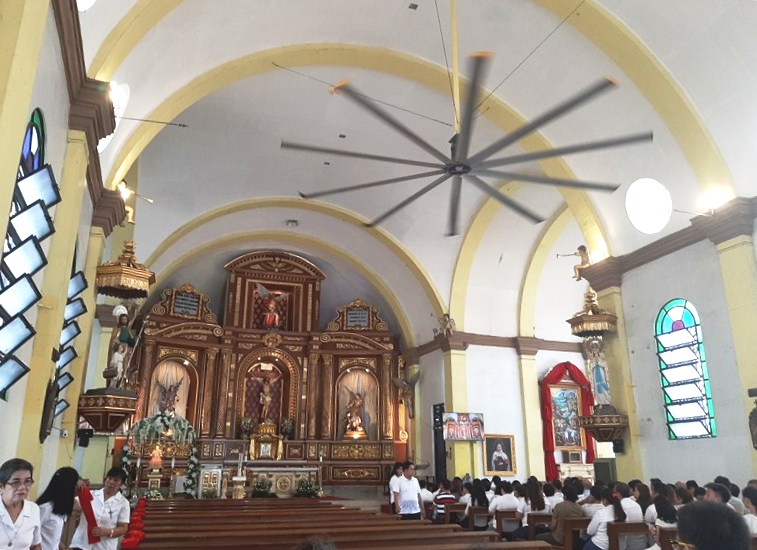
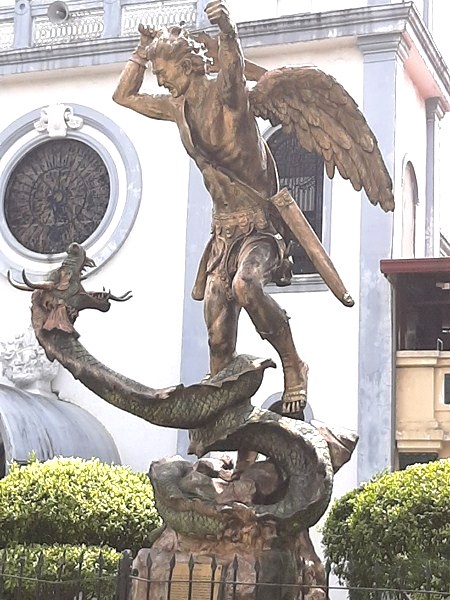
Hi benjielayug.com admin, You always provide in-depth analysis and understanding.